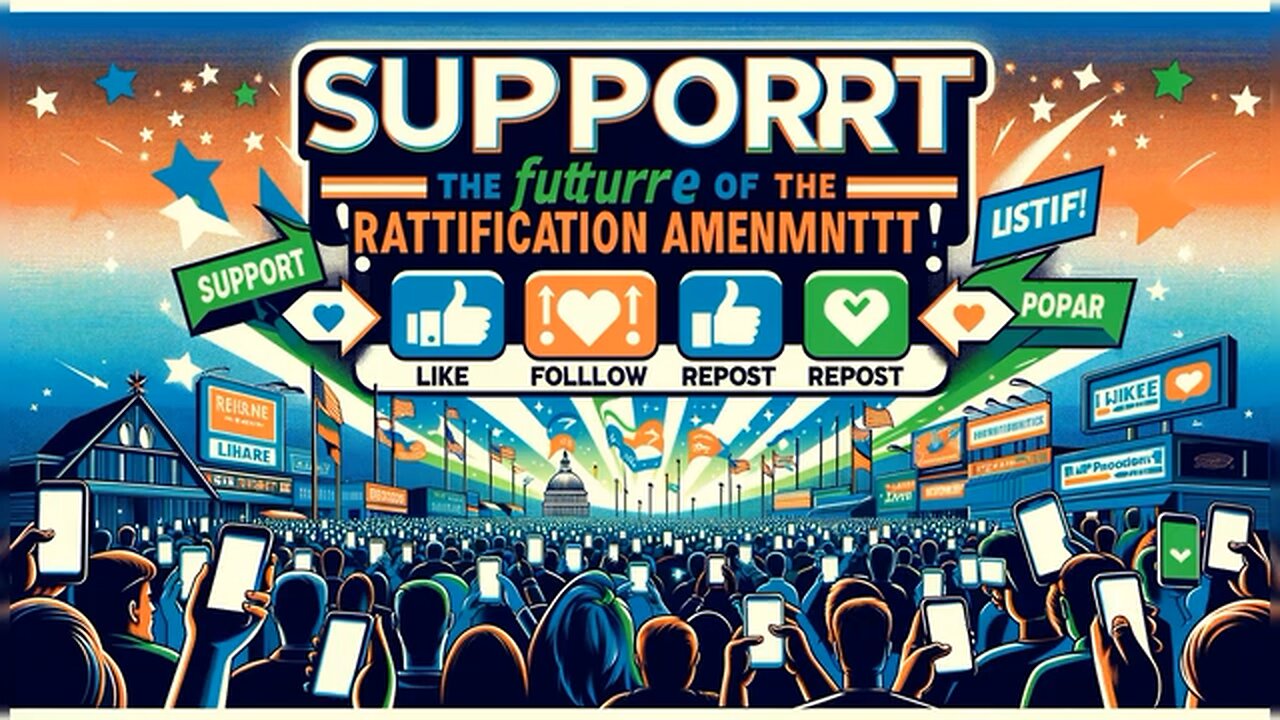Premium Only Content

The Citizens Ratification Amendment (CRA) introduces an innovative approach to democratic participation in the United States. This plan envisions the creation of the Citizens Ratification Branch (CRB), an independent entity that functions alongside the existing branches of government, without altering their structure or functions. Hereâs a detailed overview of the CRAâs strategic vision:
### Enhancing Democratic Engagement
The CRA is designed to deepen the democratic process by enabling direct citizen participation in the governance of laws and regulations. Through the CRB, citizens will have the power to ratify or unratify laws each month via an advanced, secure online portal. This continuous engagement ensures that the citizenry's voice is not only heard but is influential in shaping the legislative landscape.
### Advanced Security and Technology
Utilizing state-of-the-art technology, including quantum computing and artificial intelligence, the CRA ensures the integrity and security of the ratification process. This technological framework is built to safeguard against tampering and to guarantee that each citizenâs vote is accurately counted and protected, maintaining a high standard of trust and reliability.
### Transparency and Accountability
A cornerstone of the CRA is its commitment to transparency. Results of ratifications are openly published on the portal, with certified outcomes following comprehensive forensic audits. This transparency ensures that all citizens can trust and verify the accuracy of the results, fostering a climate of accountability.
### Nonpartisan Operation
The CRB operates under a strict nonpartisan mandate, which is essential for it to function effectively as a fair and unbiased platform. This nonpartisan stance helps ensure that no single group can dominate the process, thereby maintaining a balanced and equitable system that reflects the diverse views of all Americans.
### Governance Structure
The CRB is managed by a general manager appointed by the President and managers from each state, reflecting a national and comprehensive approach to governance. This structure allows for democratic oversight of the management itself, with provisions for removing managers if necessary, ensuring the system remains dynamic and responsive to the public will.
### Impact on Public Policy
By providing a direct mechanism for citizen participation, the CRA is poised to make government more responsive and aligned with the collective will of the people. It offers a method for the public to express approval or disapproval of laws directly, potentially leading to legislation that more accurately reflects the public interest.
### Future-Ready Governance
The CRA is not just about the present but is also geared towards making the legislative process robust enough to adapt to future challenges and changes. By integrating advanced technologies and a flexible management system, it prepares the United States to meet the evolving needs of its citizens in the 21st century and beyond.
### Conclusion
The Citizens Ratification Amendment represents a significant evolution in how democracy is practiced in the United States. By providing a platform for direct and secure citizen engagement in the law-making process, the CRA seeks to enhance the effectiveness, responsiveness, and transparency of governance, thereby revitalizing the foundational democratic principles of the republic.
-
 2:49:55
2:49:55
TimcastIRL
4 hours agoGOP Office TORCHED, Terror Suspected, Elon Says ARREST Dem Funders w/Winston Marshall | Timcast IRL
154K69 -
 1:39:42
1:39:42
Glenn Greenwald
6 hours agoMajor Escalation in Attempts to Purge U.S. Universities of Israel Critics; Who are the Israel Groups Providing Lists to the U.S. Government to Deport & Punish? | SYSTEM UPDATE #431
150K133 -
 LIVE
LIVE
SpartanTheDogg
9 hours agoPro Halo Player
498 watching -
 1:08:55
1:08:55
Donald Trump Jr.
10 hours agoGlobalist Panic & Populist Prosperity, Live with Natalie Winters & Alex Epstein | Triggered Ep229
141K97 -
 1:37:15
1:37:15
CocktailsConsoles
2 hours agoBE PART OF THE GAME!!| Death Road to Canada | Cocktails & Consoles Livestream
8.35K -
 1:04:29
1:04:29
BonginoReport
8 hours agoFDA Vax Pusher Needs to Look in the Mirror - Nightly Scroll w/ Hayley (Ep.16) - 03/31/2025
102K75 -
 3:27:31
3:27:31
SquallRush
1 day agoBrawlhalla Mondays!
12.4K -
 LIVE
LIVE
Misfit Electronic Gaming
7 hours ago $0.25 earned"LIVE" It's So Monday So lets Perk it up. Lets Earn Gears"Party Animals" & R.E.P.O. Who will join me????
261 watching -
 54:13
54:13
Sarah Westall
7 hours agoCIA Disclosures: Ark of the Convenient, the Pyramid Code, Ley Lines & Earth’s Energy w/ Jason Shurka
76.2K21 -
 1:16:28
1:16:28
Kim Iversen
9 hours agoThere Was No COVID Virus! How We've All Been Duped By The Medical Establishment
143K280